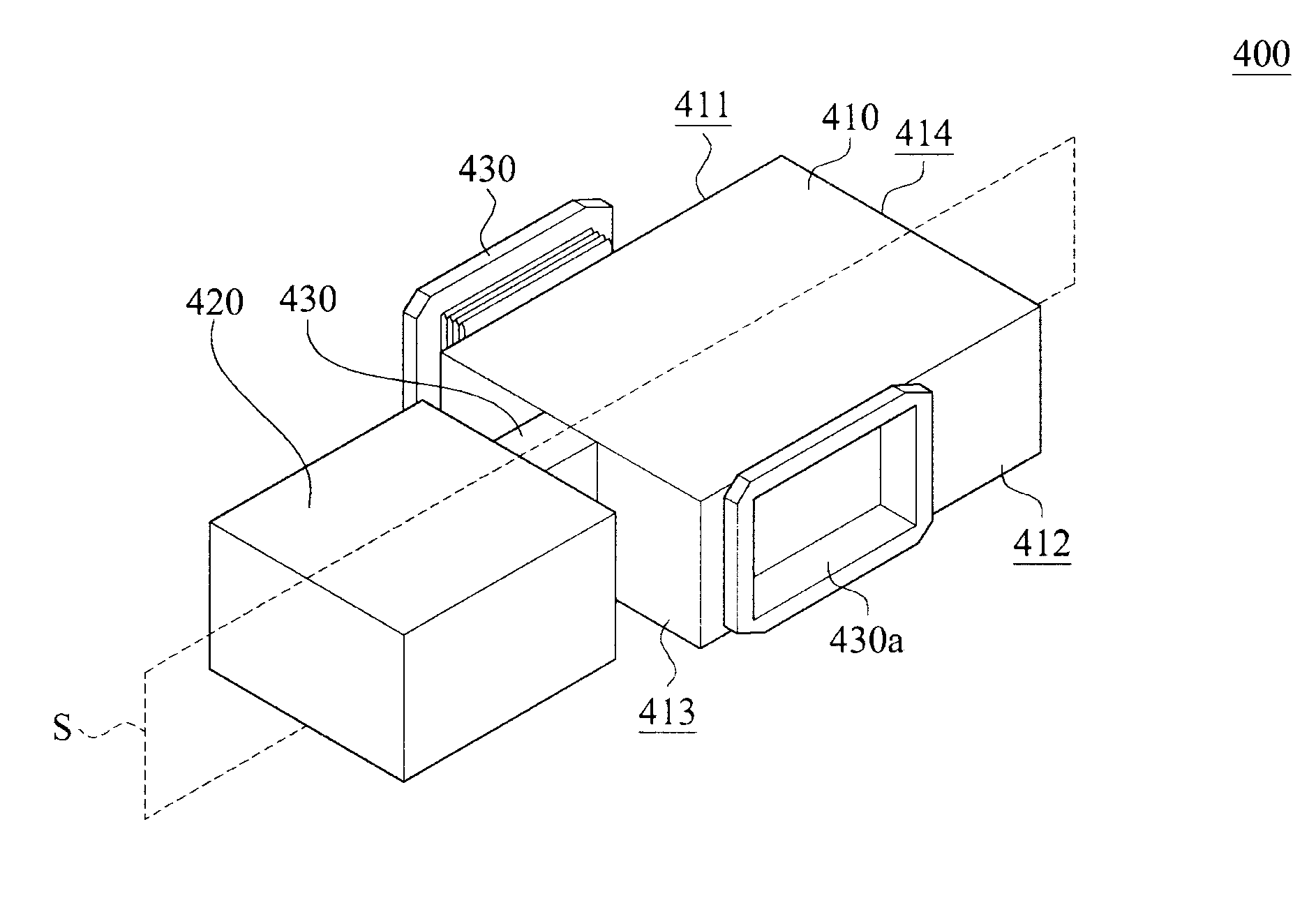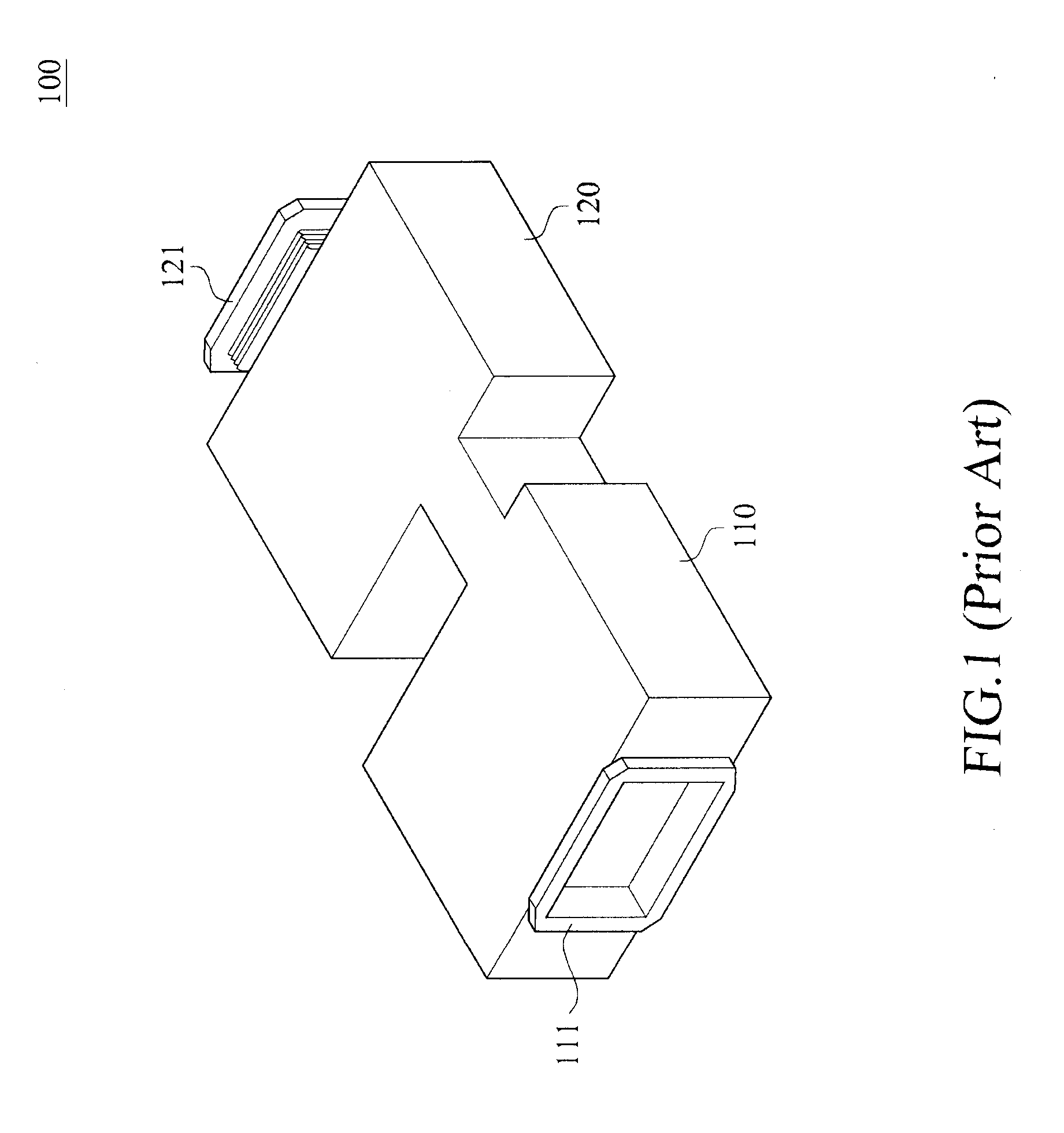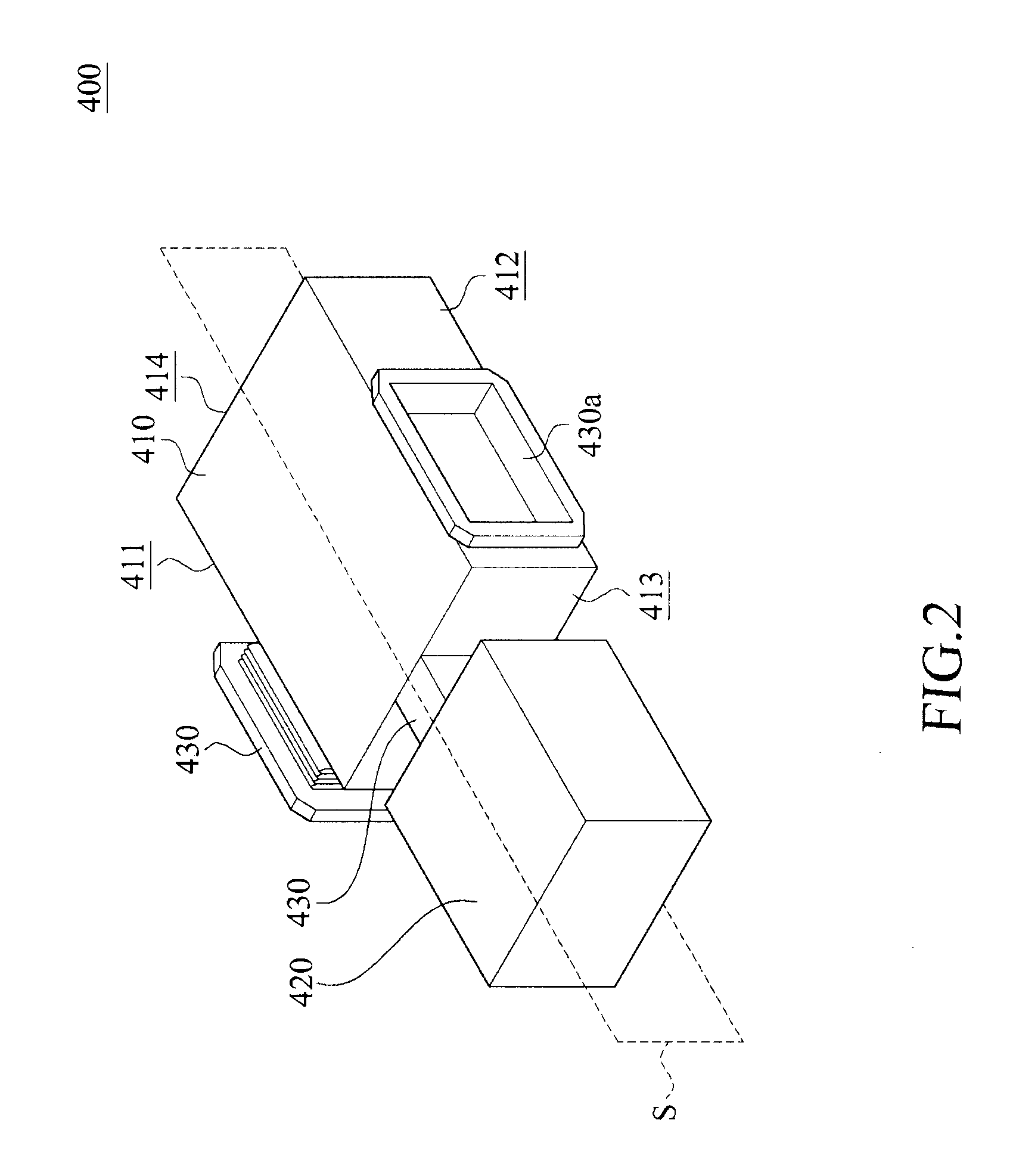Microwave filter based on a novel combination of single-mode and dual-mode cavities
- Summary
- Abstract
- Description
- Claims
- Application Information
AI Technical Summary
Benefits of technology
Problems solved by technology
Method used
Image
Examples
Embodiment Construction
[0022]Please refer to FIG. 2, which is a perspective view illustrating the basic physical configuration of a microwave filter 400 according to a first embodiment of the present invention. FIG. 3 illustrates the microwave filter 400 coupling to an input waveguide 300 and an output waveguide 500.
[0023]The microwave filter 400 based on single-mode and dual-mode cavities is used for filtering an electromagnetic wave transmitted from the input waveguide 300 to the output waveguide 500. The microwave filter 400 can be a band-pass filter, so that the microwave filter 400 allows certain frequencies of the electromagnetic wave to be transmitted to the output waveguide 500 while rejecting the remaining frequencies.
[0024]The microwave filter 400 comprises a dual-mode cavity 410, a single-mode cavity 420, and a plurality of binding passages 430, 430a.
[0025]The dual-mode cavity 410 has a rectangular shape and is symmetric to a symmetric reference plane S. The dual-mode cavity 410 has a first si...
PUM
 Login to view more
Login to view more Abstract
Description
Claims
Application Information
 Login to view more
Login to view more - R&D Engineer
- R&D Manager
- IP Professional
- Industry Leading Data Capabilities
- Powerful AI technology
- Patent DNA Extraction
Browse by: Latest US Patents, China's latest patents, Technical Efficacy Thesaurus, Application Domain, Technology Topic.
© 2024 PatSnap. All rights reserved.Legal|Privacy policy|Modern Slavery Act Transparency Statement|Sitemap



